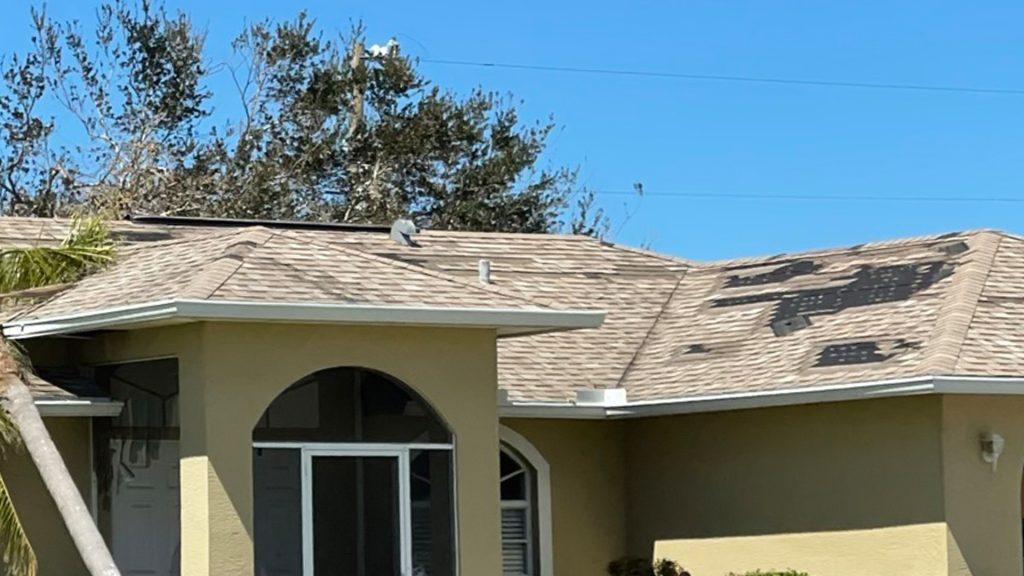Florida’s unique climate, characterized by sweltering heat, heavy rainfall, and the occasional hurricane, presents a considerable challenge for homeowners when it comes to the longevity of their roofs. A well-maintained roof is essential to protect your home from the elements, making it crucial to understand the lifespan of different roofing materials in this demanding environment. In this article, we’ll delve into the specifics of shingle roofs and answer the burning question: How long does a shingle roof last in Florida?

Understanding Shingle Roofs
Shingle roofs are a popular choice for many Florida homeowners due to their affordability, versatility, and aesthetic appeal. Shingles are typically made from materials like asphalt, wood, metal, or composite. In Florida, asphalt shingles are the most commonly used type, primarily because of their durability and cost-effectiveness. These roofs consist of individual shingles that overlap to form a protective barrier against the elements. However, the lifespan of a shingle roof in Florida can vary depending on several factors.
Factors Affecting Shingle Roof Longevity
- Material QualityThe quality of the shingles you choose is a significant factor in determining how long your roof will last. High-quality, durable shingles will naturally have a longer lifespan. In Florida, it’s advisable to invest in shingles specifically designed to withstand the intense heat, humidity, and UV exposure.
- InstallationProper installation is key to the longevity of a shingle roof. Shingles must be installed correctly, with appropriate underlayment and ventilation. Poor installation can lead to premature deterioration, leaks, and other issues that shorten the roof’s lifespan.
- ClimateFlorida’s climate is notoriously harsh on roofs. The combination of scorching sun, heavy rains, and occasional storms can take a toll on shingles. Roofing materials must be able to endure the extreme weather conditions to last longer.
- MaintenanceRegular maintenance and inspection can significantly extend the lifespan of a shingle roof. Inspecting for damaged or missing shingles, cleaning gutters, and addressing minor issues promptly can prevent more significant problems down the road.
- Hurricane and Storm DamageFlorida is prone to hurricanes and tropical storms. The high winds and flying debris during these weather events can cause substantial damage to a shingle roof. Investing in shingles rated for wind resistance and timely repairs after storms can help your roof last longer.
- VentilationProper attic ventilation is essential for shingle roofs in Florida. It helps regulate temperature and moisture levels, preventing premature shingle deterioration caused by excessive heat and humidity.
Average Lifespan of a Shingle Roof in Florida
The average lifespan of a shingle roof in Florida typically ranges from 15 to 25 years, with proper maintenance. However, many factors can influence the exact duration. Here’s a breakdown of what you can expect for different types of shingles:
- 3-Tab Asphalt Shingles: These are the most basic and budget-friendly option. In Florida, they may last around 15 to 20 years.
- Architectural (Dimensional) Shingles: With higher quality and a more layered design, architectural shingles can endure for 20 to 25 years in Florida.
- High-End Asphalt Shingles: Premium, high-end asphalt shingles can last up to 30 years or more, provided they are well-maintained.
- Metal Shingles: Metal shingles, such as aluminum or steel, can withstand Florida’s climate and last 30 to 50 years or more.
It’s important to note that these are rough estimates, and the actual lifespan of your shingle roof can vary depending on the specific brand, climate, and maintenance efforts.
Tips for Extending the Lifespan of Your Shingle Roof
- Regularly inspect your roof for signs of damage, such as missing or damaged shingles.
- Clean your gutters to ensure proper water drainage and prevent water damage.
- Ensure your attic has adequate ventilation to control temperature and humidity.
- Trim nearby trees and branches to prevent damage from falling debris during storms.
- After a major storm or hurricane, have your roof inspected for any hidden damage.
Conclusion
In Florida, the lifespan of a shingle roof depends on various factors, including material quality, installation, climate, and maintenance. While the average lifespan falls within the 15 to 25-year range, careful selection of shingle types and proper maintenance can extend the life of your roof. Regular inspections, timely repairs, and hurricane preparedness are essential for ensuring your shingle roof serves your home well in the Sunshine State.



Leave a Reply